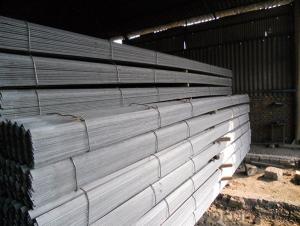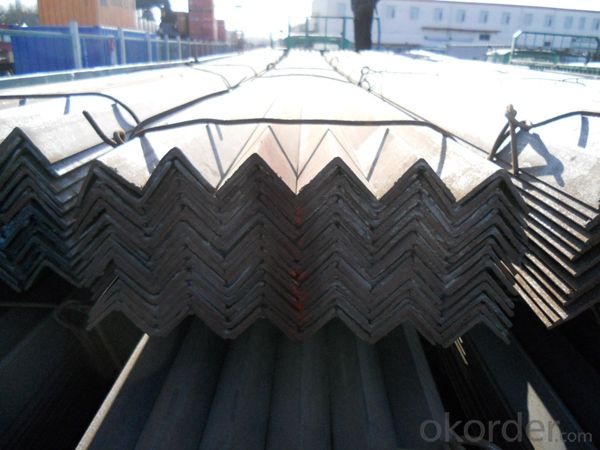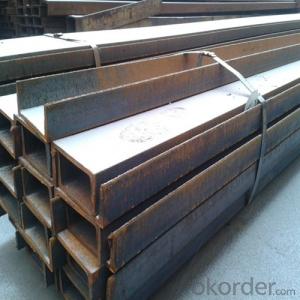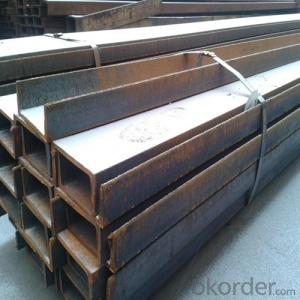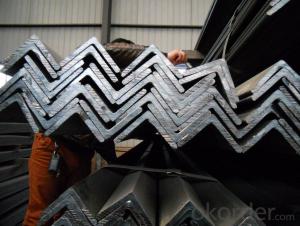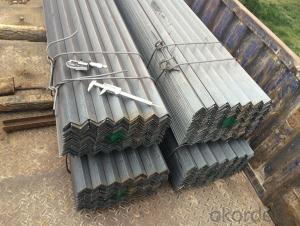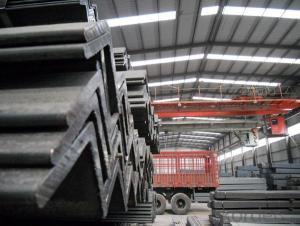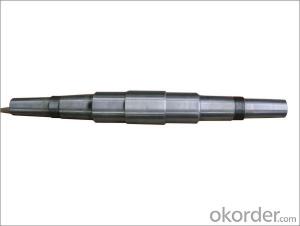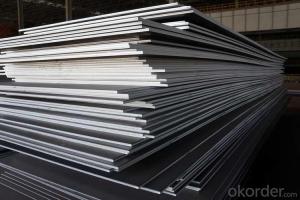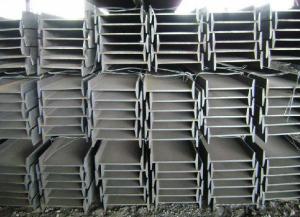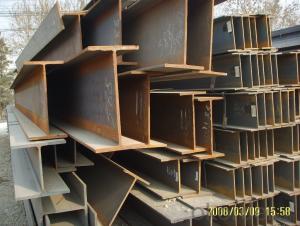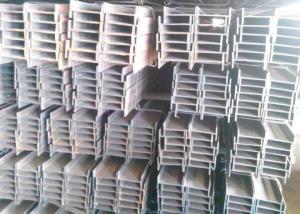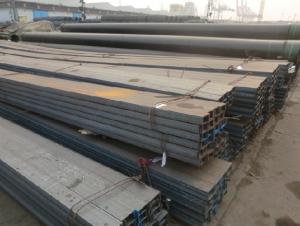High Quality Hot Rolled Equal Angle Steel Bars for Constrcution
- Loading Port:
- Tianjin
- Payment Terms:
- TT OR LC
- Min Order Qty:
- 25 m.t.
- Supply Capability:
- 200000 m.t./month
OKorder Service Pledge
OKorder Financial Service
You Might Also Like
Product Description:
OKorder is offering high quality High Quality Hot Rolled Equal Angle Steel Bars for Constrcution at great prices with worldwide shipping. Our supplier is a world-class manufacturer of steel, with our products utilized the world over. OKorder annually supplies products to European, North American and Asian markets. We provide quotations within 24 hours of receiving an inquiry and guarantee competitive prices.
Product Applications:
High Quality Hot Rolled Equal Angle Steel Bars for Constrcution are ideal for structural applications and are widely used in the construction of buildings and bridges, and the manufacturing, petrochemical, and transportation industries.
1. Supporting members, most commonly in the house raising industry to strengthen timber bears under houses. Transmission line towers, etc
2. Prefabricated structure
3. Medium scale bridges
4. It is widely used in various building structures and engineering structures such as roof beams, bridges, transmission towers, hoisting machinery and transport machinery, ships, industrial furnaces, reaction tower, container frame and warehouse etc.
Product Advantages:
High Quality Hot Rolled Equal Angle Steel Bars for Constrcution are durable, strong, and resist corrosion.
Main Product Features:
· Premium quality
· Prompt delivery & seaworthy packing (30 days after receiving deposit)
· Corrosion resistance
· Can be recycled and reused
· Mill test certification
· Professional Service
· Competitive pricing
Product Specifications:
1. Invoicing on theoretical weight or actual weight as customer request
2. Standard: EN10025, GB Standard, ASTM
3. Grade: Q235B, Q345B, SS400, ASTM A36, S235JR, S275JR
4.Sizes:
EQUAL ANGLES SIZES | |||
a(mm) | a1(mm) | thickness(mm) | length |
25 | 25 | 2.5---3.0 | 6M/12M |
30 | 30 | 2.5---4.0 | 6M/12M |
38 | 38 | 2.5 | 6M/12M |
38 | 38 | 3.0---5.0 | 6M/12M |
40 | 40 | 3.0---6.0 | 6M/12M |
50 | 50 | 3 | 6M/12M |
50 | 50 | 3.7---6.0 | 6M/9M/12M |
60 | 60 | 5.0---6.0 | 6M/9M/12M |
63 | 63 | 6.0---8.0 | 6M/9M/12M |
65 | 65 | 5.0---8.0 | 6M/9M/12M |
70 | 70 | 6.0---7.0 | 6M/9M/12M |
75 | 75 | 5.0---10.0 | 6M/9M/12M |
80 | 80 | 6.0---10.0 | 6M/9M/12M |
90 | 90 | 6.0---10.0 | 6M/9M/12M |
100 | 100 | 6.0---12.0 | 6M/9M/12M |
120 | 120 | 8.0-12.0 | 6M/9M/12M |
125 | 125 | 8.0---12.0 | 6M/9M/12M |
130 | 130 | 9.0-12.0 | 6M/9M/12M |
140 | 140 | 10.0-16.0 | 6M/9M/12M |
150 | 150 | 10---15 | 6M/9M/12M |
160 | 160 | 10---16 | 6M/9M/12M |
180 | 180 | 12---18 | 6M/9M/12M |
200 | 200 | 14---20 | 6M/9M/12M |
5. Material details:
Alloy No | Grade | Element (%) | |||||
C | Mn | S | P | Si | |||
Q235 | B | 0.12—0.20 | 0.3—0.7 | ≤0.045 | ≤0.045 | ≤0.3 | |
Alloy No | Grade | Yielding strength point( Mpa) | |||||
Thickness (mm) | |||||||
≤16 | >16--40 | >40--60 | >60--100 | ||||
≥ | |||||||
Q235 | B | 235 | 225 | 215 | 205 | ||
Alloy No | Grade | Tensile strength (Mpa) | Elongation after fracture (%) | ||||
Thickness (mm) | |||||||
≤16 | >16--40 | >40--60 | >60--100 | ||||
≥ | |||||||
Q235 | B | 375--500 | 26 | 25 | 24 | 23 | |
FAQ:
Q1: Why buy Materials & Equipment from OKorder.com?
A1: All products offered byOKorder.com are carefully selected from China's most reliable manufacturing enterprises. Through its ISO certifications, OKorder.com adheres to the highest standards and a commitment to supply chain safety and customer satisfaction.
Q2: How do we guarantee the quality of our products?
A2: We have established an advanced quality management system which conducts strict quality tests at every step, from raw materials to the final product. At the same time, we provide extensive follow-up service assurances as required.
Q3: How soon can we receive the product after purchase?
A3: Within three days of placing an order, we will begin production. The specific shipping date is dependent upon international and government factors, but is typically 7 to 10 workdays.
Q4: What makes stainless steel stainless?
A4: Stainless steel must contain at least 10.5 % chromium. It is this element that reacts with the oxygen in the air to form a complex chrome-oxide surface layer that is invisible but strong enough to prevent further oxygen from "staining" (rusting) the surface. Higher levels of chromium and the addition of other alloying elements such as nickel and molybdenum enhance this surface layer and improve the corrosion resistance of the stainless material.
Q5: Can stainless steel rust?
A5: Stainless does not "rust" as you think of regular steel rusting with a red oxide on the surface that flakes off. If you see red rust it is probably due to some iron particles that have contaminated the surface of the stainless steel and it is these iron particles that are rusting. Look at the source of the rusting and see if you can remove it from the surface.
Images:
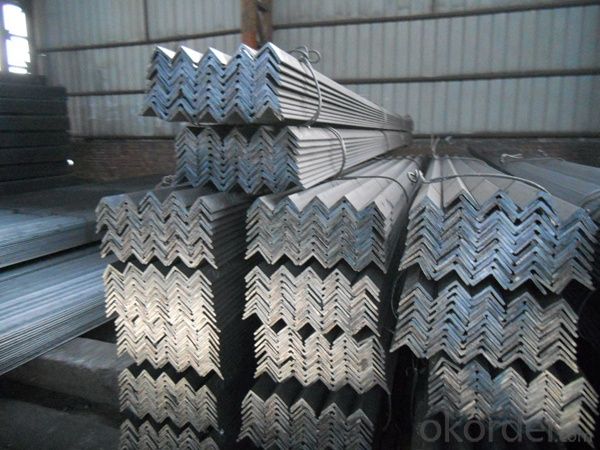
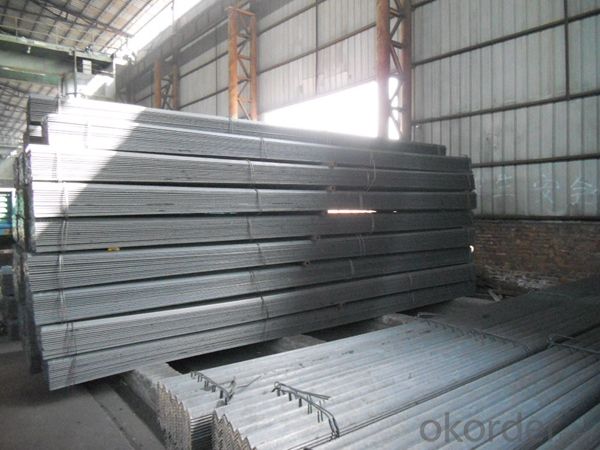
- Q: What is the purpose of a camber in a steel I-beam?
- The purpose of incorporating a camber into a steel I-beam is to compensate for the deflection experienced when subjected to a load. When a vertical load is applied to a beam, it tends to bend or sag in the middle, which can pose problems in certain applications that require a level or straight surface. During the manufacturing process, a slight upward curvature is intentionally introduced to the steel I-beam, known as camber. This curvature is specifically designed to counteract the expected deflection caused by a given load. As the beam is loaded, the camber gradually diminishes, resulting in a more straightened shape. This ensures that a level or straight surface is maintained, even under heavy loads. The calculation of the camber in a steel I-beam is meticulously performed, taking into account the anticipated loads and desired limits for deflection. This camber is typically applied during fabrication, where the beam undergoes heating and manipulation to achieve the desired camber profile. The amount of camber can vary depending on factors such as the span length, distribution of the load, and properties of the material. In conclusion, the purpose of incorporating camber into a steel I-beam is to counteract the deflection experienced under load, guaranteeing the maintenance of a level or straight surface. This design feature enhances the structural integrity and performance of the beam in applications where precise control of deflection is crucial.
- Q: Can steel I-beams be used in water or wastewater treatment plant construction?
- Water or wastewater treatment plant construction can make use of steel I-beams. These I-beams are often chosen for construction purposes due to their strength, durability, and versatility. They are capable of bearing heavy loads and maintaining structural integrity, making them suitable for a range of applications within water and wastewater treatment plants. Within water treatment plants, steel I-beams find application in supporting and reinforcing structures that house treatment processes. They are employed in the construction of sedimentation tanks, clarifiers, filtration systems, and chemical treatment facilities. By providing a robust framework, steel I-beams can withstand the weight of equipment, machinery, and water storage tanks utilized in the treatment process. Likewise, in wastewater treatment plants, steel I-beams are versatile and can be used for various purposes. They can be employed in the construction of aeration tanks, digesters, sludge dewatering facilities, and pumping stations. Steel I-beams are capable of supporting the weight of large tanks and equipment, ensuring the stability and safety of the structures. Moreover, steel I-beams possess resistance to corrosion, rendering them particularly suitable for water and wastewater treatment plant environments. The presence of chemicals, moisture, and fluctuating temperatures in these facilities can cause deterioration in certain construction materials. However, steel I-beams maintain their durability and can withstand these harsh conditions, making them a reliable choice for long-term use in water and wastewater treatment plant construction. In conclusion, steel I-beams are commonly employed in water and wastewater treatment plant construction due to their strength, durability, versatility, and resistance to corrosion. They offer the necessary support and structural integrity required for the efficient and safe operation of treatment processes.
- Q: Can steel I-beams be used in energy-efficient building renovations?
- Yes, steel I-beams can be used in energy-efficient building renovations. Steel I-beams offer several advantages that make them suitable for energy-efficient renovations. Firstly, steel is a highly durable and strong material, allowing I-beams to provide structural support while reducing the need for excessive materials and construction. This can help minimize waste during renovation projects. Additionally, steel I-beams have a high load-bearing capacity, allowing for the creation of open floor plans and the integration of large windows, which enhances natural lighting and reduces the need for artificial lighting during the day. Furthermore, steel is a sustainable material that can be recycled, reducing the environmental impact of the renovation process. The use of steel I-beams also allows for the incorporation of insulation materials, such as spray foam or rigid foam, which can significantly improve the building's energy efficiency by reducing heat transfer. Moreover, steel I-beams can be designed to support the installation of energy-efficient systems, such as solar panels or green roofs, which contribute to the overall energy efficiency of the building. These systems can generate renewable energy and reduce the building's reliance on traditional energy sources. In conclusion, steel I-beams can be effectively used in energy-efficient building renovations. Their strength, durability, recyclability, and compatibility with energy-efficient systems make them a suitable choice for sustainable and environmentally friendly building projects.
- Q: Span 3.6 meters, 3.7 meters long, with I-beam or channel steel as an interlayer, put wood on board, live, please ask what the use of large I-beam or channel, how much space?
- 1, if it is a concentrated load of P, then a No. 10 I-beam bears 450kg (5.7 meters in the middle can withstand 450kg weight). 2, if the load is covered with G, is a 10 157.7kg/m for I-beam (i.e. within 5.7 meters in length, the average can be covered with 157.7kg weight) you load 4 tons, which is now 4000kg, 10, N=4000 / 450=9 I need root (middle load).
- Q: How do steel I-beams perform in terms of stiffness and rigidity?
- Steel I-beams are highly regarded for their exceptional stiffness and rigidity, making them the perfect choice for structural purposes. The distinctive construction of I-beams, featuring a vertical web that connects the top and bottom flanges, enables them to effectively distribute loads and withstand bending and deflection. In terms of stiffness, steel I-beams offer impressive resistance to deformation when subjected to applied loads. The vertical web acts as a solid support, preventing excessive sagging or bending of the beam. This stiffness guarantees that the beam maintains its shape and structural integrity, even under demanding loads or harsh environmental conditions. Rigidity, which refers to a material's ability to resist deformation or bending, is a key trait of steel I-beams. Their composition, including a combination of iron and carbon, endows them with high rigidity. This combination results in a strong and rigid material that can endure substantial forces without experiencing excessive deflection or deformation. Moreover, the shape of I-beams also contributes to their excellent stiffness and rigidity. The flanges situated at the top and bottom of the beam provide additional strength and resistance against bending moments. This design allows the I-beam to efficiently distribute loads and minimize deflection, thus making it suitable for applications that demand stable and rigid structures. In conclusion, steel I-beams are widely recognized for their remarkable stiffness and rigidity. Their unique shape and composition make them highly resistant to bending and deformation, enabling them to provide reliable support and structural integrity in various applications, including building construction, bridges, and industrial structures.
- Q: Can steel I-beams be used for exhibition halls?
- Yes, steel I-beams can be used for exhibition halls. Steel I-beams are commonly used in construction due to their strength and durability, making them suitable for supporting large structures like exhibition halls.
- Q: What does "I-beam 125A" mean?
- The same height of the I-beam, if there are several different leg width and waist thickness, need to add a, B, C on the right side of the model to distinguish, such as 32a, 32B, 32c and so on.
- Q: How do steel I-beams contribute to sustainable building practices?
- There are several ways in which steel I-beams contribute to sustainable building practices. Firstly, steel is an extremely sustainable building material. It can be recycled completely, which means that any steel used in construction can be easily and efficiently repurposed at the end of a building's life cycle. This reduces the need for new raw materials and results in less waste. Secondly, steel I-beams are highly durable and long-lasting. They have a high strength-to-weight ratio, which means that they can support heavy loads without adding excessive weight to the structure. This durability reduces the need for frequent repairs or replacements, resulting in lower maintenance costs and less waste over time. In addition, steel I-beams can be prefabricated off-site and then transported to the construction site. This process requires less energy and resources compared to on-site fabrication, which reduces the carbon footprint of the building project. Moreover, the use of prefabricated steel components can significantly decrease construction time, leading to less disruption to the surrounding environment and a more efficient use of resources. Furthermore, steel I-beams can be designed to maximize energy efficiency in buildings. They can support the integration of insulation materials, which allows for better thermal performance and reduces the need for excessive heating or cooling. Additionally, steel can be combined with other sustainable building systems, such as renewable energy technologies or green roofs, to further enhance the overall sustainability of the building. Lastly, steel I-beams are resistant to fire, pests, and extreme weather conditions, making them a reliable choice for sustainable construction. The longevity of steel structures reduces the need for frequent rebuilding, saving resources and minimizing the environmental impact of the construction industry. In conclusion, steel I-beams contribute to sustainable building practices through their recyclability, durability, energy efficiency, and resistance to various hazards. Their use in construction promotes resource conservation, reduces waste, and helps create environmentally friendly buildings that can last for generations.
- Q: How do steel I-beams perform in terms of deflection and sagging?
- The excellent performance of steel I-beams in terms of deflection and sagging is widely recognized. This is due to their distinctive shape, which features a vertical web and horizontal flanges. As a result of this design, they have a remarkable resistance to bending and can support heavy loads without experiencing significant deflection or sagging. The distribution of load along the length of the beam is achieved through the design of I-beams. This design minimizes the amount of deflection that occurs. The vertical web contributes most of the beam's strength, while the horizontal flanges assist in resisting bending forces. This structural configuration ensures that I-beams can endure substantial weight and pressure without excessive bending or sagging. Furthermore, steel is an incredibly strong and durable material, making it an ideal choice for constructing I-beams. Its high tensile strength allows steel I-beams to handle heavy loads and resist deformation. This strength enables them to maintain their shape and prevent excessive deflection or sagging. Additionally, steel I-beams are frequently utilized in construction projects due to their high stiffness-to-weight ratio. This means that they are relatively lightweight in comparison to the weight they can support. The combination of their robust structural design and the inherent strength of steel allows I-beams to uphold their rigidity and prevent excessive deflection, even when subjected to significant loads. In conclusion, steel I-beams are highly effective when it comes to deflection and sagging. Their unique shape, along with the strength and durability of steel, allows them to support heavy loads and minimize any deformation or sagging that may occur. Consequently, they are a popular choice for various construction applications where maintaining structural integrity is crucial.
- Q: Can steel I-beams be used for roof trusses?
- Yes, steel I-beams can be used for roof trusses. They are commonly used in commercial and industrial buildings where their strength and load-bearing capacity are advantageous. However, it is important to ensure proper engineering and design considerations are taken into account to meet the specific structural requirements and local building codes.
Send your message to us
High Quality Hot Rolled Equal Angle Steel Bars for Constrcution
- Loading Port:
- Tianjin
- Payment Terms:
- TT OR LC
- Min Order Qty:
- 25 m.t.
- Supply Capability:
- 200000 m.t./month
OKorder Service Pledge
OKorder Financial Service
Similar products
Hot products
Hot Searches
Related keywords
